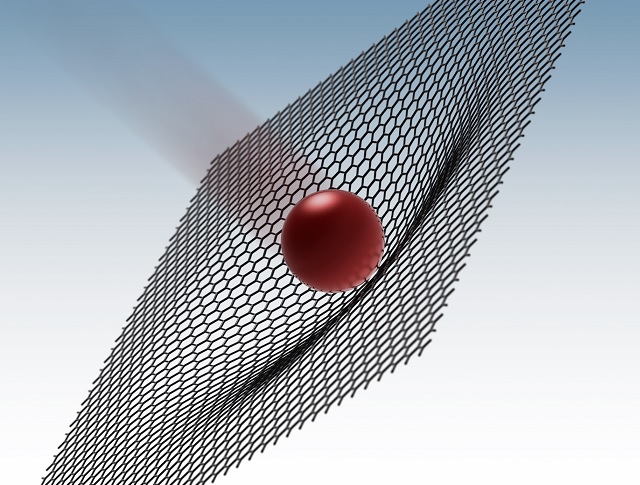
Scientists at Rice University have used microbullets to determine the strength of graphene. The research team believe that this technique could be used to measure the strength of a wide range of materials.
The electronic properties and tensile strength of graphene has been extensively evaluated over the last few years. This new research studied graphene’s ability to absorb an impact.
The team at Rice University found that the properties of graphene allow it to be stiff, elastic and strong. These properties could lead to potential applications in the manufacture of spacecraft and body armour.
The team used a laser-induced projectile impact test (LIPIT) to carry out this new research. LIPIT uses laser energy to drive microbullets away from an absorbing gold surface at high speed.
Microbullet hits confirm graphene's strength at Rice University
In 2012, the research team made use of an earlier version of LIPIT to evaluate the properties of multiblock copolymers, which can prevent and encase microbullets.
Following on from this prior study, the researchers improved the firing technique of single microscopic spheres with high precision to a speed greater than the speeding bullet from an AK-47. A custom stage was built to arrange multilayer graphene sheets which are mechanically drawn using bulk graphite.
The tested sheets ranged in thickness from 10 to 100 nanometres.
A high-speed camera was used to capture projectile images before and after impact in order to determine the projectile speed using simple kinematic calculations.
It was observed that the graphene was penetrated by the 3.7µm spheres, leaving behind a fractured pattern of ‘petals’ around the impact which indicate the stretchability of graphene.
The tested graphene distributed the stress of the bullet in about 3 nanoseconds over a wide area defined by a shallow cone around the centre point of the impact.
The stress was distributed at a speed of 22.2 kilometres per second, which is much faster than the speed of sound in air. Using the measured diameter of the cone created by the impact of microbullet on the graphene, it was possible to determine the absorption energy of graphene before breaking.
LIPIT lets us develop rapid methodologies to test nanoscale materials and find promising candidates. We’re working to demonstrate to NASA and the military that these microscopic tests are relevant to macroscopic properties.
Edwin Thomas, George R. Brown School of Engineering at Rice University
The team at Rice University stated that the controlled layering of graphene sheets could lead to the development of lightweight, energy-absorbing materials. This study has been published in the journal Science.
This News Feature Around the Web